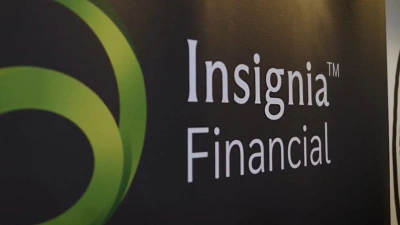Gearing up for the tax benefits
While it is totally accepted by investors to borrow large amounts of capital to finance their own home, they are more reluctant to borrow money to invest in shares.
The intangible nature of shares has for a long time affected the way clients have considered their investments and investment portfolios.
But with a growing number of Australians now owning shares — thanks to the public floats of Woolworths, the Commonwealth Bank, Telstra and Qantas to name a few — perceptions of investing in shares is changing.
And so too are people’s attitudes to gearing to invest in shares.
Gearing is the process of borrowing to invest. Borrowing funds enables clients to invest at a level greater than would otherwise have been achievable with their available funds and thereby increases the potential for capital gain. At the same time, the potential for capital loss is also increased.
Geared investments can also provide a possible tax deduction that can be used to offset other taxable income. The tax deduction is of most benefit to investors on a high marginal tax rate.
According to Bridgeport — Advisers and Asset Managers, the essential characteristics of a geared investor are an aggressive risk profile with a long-term investment frame and a strong secure source of income. Freedom of debt that does not provide tax advantages is also important.
These features are important because of the risk associated with investing borrowed funds.
The loan provider requires the investor to make interest payments. At times, the interest payments may fall due prior to receiving investment income. In these circumstances, it is essential that the investor has sufficient other income to meet the interest payments, and that this income be secure. If the investor was unable to meet the interest payments, the investment may have to be sold at a time when market conditions were not favourable.
This is another reason why adequate insurance cover is very important. Adequate income protection ensures if market conditions change, the client will only have to worry about financing their loan and not medical costs should they become ill.
The use of borrowed funds magnifies the effect of market falls on the value of the investment. The investor must be in a position to tolerate market fluctuations. For this reason, an aggressive risk profile and long-term investment horizon are necessary to enable the investment to perform to expectation.
In a gearing comparison of shares versus property, the inappropriate conclusions a client may come to when considering gearing, become apparent.
This is best explained by example. This case study is based upon a $100,000 investment both in shares and property with an interest rate of 7.5 per cent per annum.
If the income from a property was $5,500 and the income on an equity investment from dividends was $3,500, due to the expenses associated with a property, a client may assume that they are better off tax wise to gear into property.
In this example, the expenses associated with the property include rates, insurance, agent fees, repairs, strata levies and interest, creating a total cost bill of $9,885. The expenses associated with the share investment on the other hand relate to interest only, amounting to $7,500.
Subtracting the expenses from the income on both investments creates a pre-tax loss of -$4,385 for the property investment and a flat -$4,000 for the shares.
While clients may be allured by the lower pre-tax loss for shares, this obviously does not necessarily mean they will get this amount in total on their return.
However, when you multiply the pre-tax loss by the marginal rate of tax, the after tax profit on the share investment is significantly reduced thanks to franking credits — the magic two words and the essential element of this comparison.
Therefore, while the return on investment required to break even in the case of the property is 2.25 per cent, for the share investment, it is almost half at 1.3 per cent.
The real driver in the decision between property and shares is the quality of the underlying investment.
A tax deduction is made when an investment makes a loss. If the value of the underlying asset does not grow enough to recover this loss, then the idea of gearing is predominantly a waste of time.
For shares, the value of the franking credits cannot be overestimated. While clients may find the concept difficult to understand, an example similar to that above should help them to realise the benefit that they derive.
Howard Pitts is seniorfinancial planner at Bridgeport—Advisers and AssetManagers. Bronwyn Speedis manager, financial planning at Bridgeport—Advisers and Asset Managers.
Recommended for you
A financial advice firm has been penalised $11 million in the Federal Court for providing ‘cookie cutter advice’ to its clients and breaching conflicted remuneration rules.
Insignia Financial has experienced total quarterly net outflows of $1.8 billion as a result of client rebalancing, while its multi-asset flows halved from the prior quarter.
Prime Financial is looking to shed its “sleeping giant” reputation with larger M&A transactions going forward, having agreed to acquire research firm Lincoln Indicators.
An affiliate of Pinnacle Investment Management has expanded its reach with a London office as the fund manager seeks to grow its overseas distribution into the UK and Europe.














